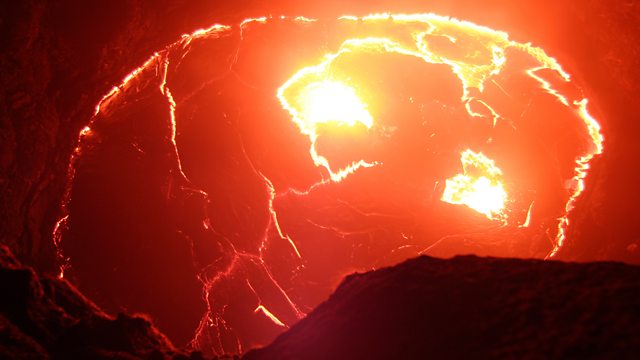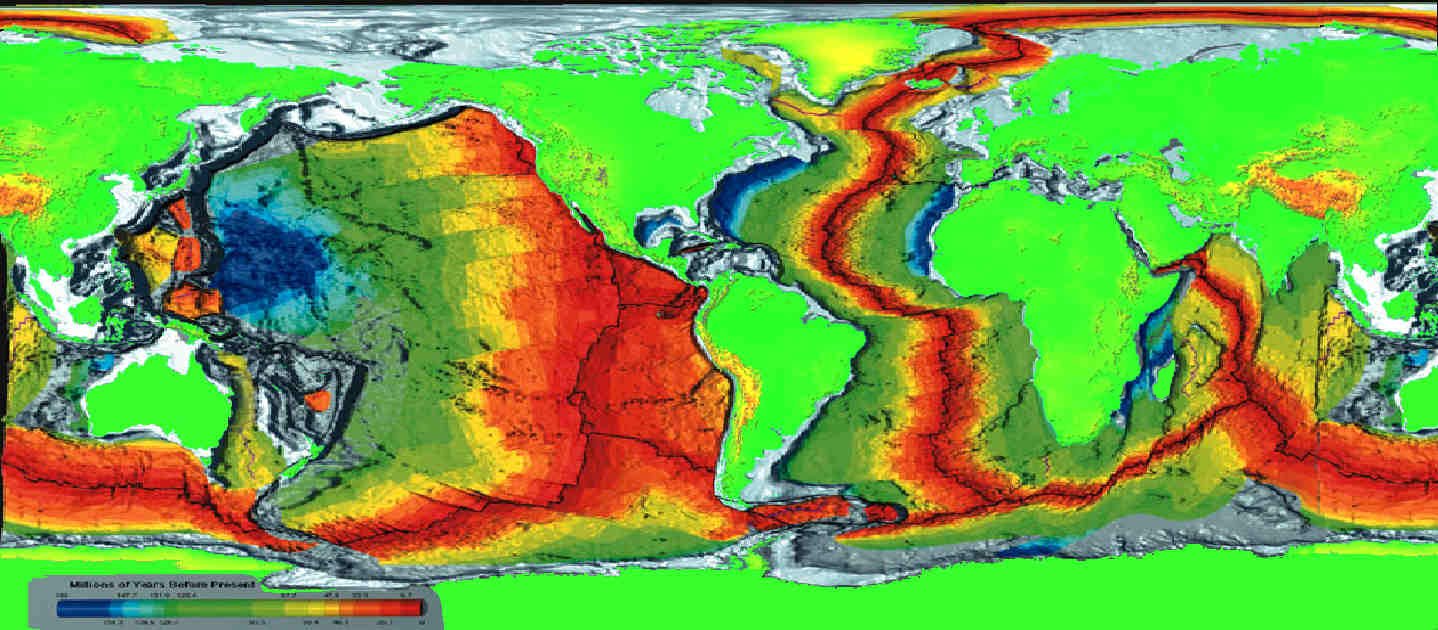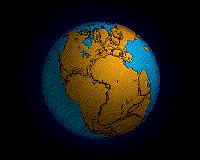
Tracing the Continental Drift page
I II
III
IV
V

on

Well, it may not be that easy, as the data is only available here
to about 50%.
The age per kilometer of spread - out ocean floor and continental crust is relatively well known, the age of the same, buried under mountains, only as a whole. To what extent continents and ocean floors were deformed by subduction and mountain building, can only be estimated.
My idea is to take, for instance, the picture
http://www.ngdc.noaa.gov/mgg/image/crustageposter.jpg
and reduce the ocean floor in steps according to its age, as depicted by the colours.
This will not work unless one has continental crust to expand accordingly. To illustrate the last 200 - 250 million years at issue here, one could superimpose the map of the alpine mountain ranges on top of the mentioned picture. For instance, one could take the first frame of the animated GIF
and resize it to fit.
| For a start, I have taken yet another map and superimposed it upon the above mentioned crustageposter.jpg here: | crustage2.jpg | |
| And have added a bit of guesswork here ( assuming that the seafloor spreading was more or less uniform over time; this need not have been the case ). With a bit of work and some color reduction, this one could probably be used as a basis for flash or morphing experiments. | crustage4b.jpg | |
| To make it a bit easier, I have put both manipulated .JPGs into this archive here |

Today, it cannot be said with certainty how old the consecutive folded mountain ranges are down below in accordance with the ocean floor. But I would say a successive unfolding, as a straightening of crumpled table cloth, would be in order.
But just how far? Until the Alps, the Himalayans, and the Andes are completely straightened out and flat. Again, how far would this be? This is a matter of common sense, speculation and whatever the machine will make of it. And, perhaps, of an erosion relation of 10:1.
And finally we will have to tear them apart, for where they are now, there was once ocean floor; in fact they consist of it for the most part.
In light of a supposed sinusoidal mantle flow below the earth's crust
Note:
Although Model 2 was used in this depiction, Model 1 is far more consistent with both objective fact and the undercurrent equatorial magma sinus flow hypothesis as proposed here.
In fact, it is still not nearly consistent enough; even in Model 1 future Eurasia needs to be placed much further to the south. The Atlantic ocean is a real rift, opening not only between South America and Africa, but between Canada and Scandinavia as well.
Furthermore, Africa needs Eurasia as a counterpart to push future Europe Tethys floor into, folding up the alps, as India does, to form the Himalayas.
Not taken into account at all is the amount of continental deformation and real crust subduction; the continents, then, did not have the shape of the continents now - where now there are mountains, millions of square miles of former continental crust lie hidden below, and above, ground level; Proto-India, for instance, would have had to had a future Tibet bulge, not a dent, to its (then) northeast.
All things taken into account, a more fact- consistent Pangaea Model would look a bit
different, a bit more compact and elongated differently, and the sinus flow magma
undercurrent would be more compact as well to stay in proportion; and, this being a map,
not a globe, the northern and southern regions would have to be disproportionately
spread as in Map 1.
This schematic depiction serves only to illustrate the principle.
Alternatively, you can have a look at the material on
this site:
http://www.scotese.com/pangeanim.htm
and look here for instructions on what to do with it.
This standard animation, exploding Pangaea in all directions from Africa,
probably is due to our Euro- and therefore, Africa- centered view onto the
globe. It accounts for sea floor spreading in the Atlantic and Indian oceans,
but not in the Pacific.
I came across Dr. Scotese's animated maps &38; globes long after I worked up mine, which was around 1996. And I wouldn't mind, since his animations (which, along with his expertise, are far superior to mine) put out roughly the same results, which I view as an honor.
But there is one difference: I go a step further, that I do not know if Dr. Scotese takes, since I have not read his books, and his animations (the ones that I know of) always center on the map he is projecting, thus making the continents move in all directions.
My own conclusion, however, is that the continents (all of them) are moving
generally EAST (some just faster than others), ever since the beginning,
driven by the earth's core rotating faster than its surface by about 1
extra revolution every 900 years, a fact that seems to
have been proven by now.
I had calculated (not measured) 1 extra revolution in every 1,000 years, which is pretty close; this would be making its influence felt as an equatorial surface drag of roughly 200 meters per extra core revolution, displacing trillions of tons of rock by 200 meters every millennium. Some put it even higher than that.
For that reason, I would extrapolate the future geography a little different than Dr. Scotese does.
Furthermore, there seems to an idea that really disruptive Earthquakes sequence
events or 'storms' take place in somewhat regular intervals of around 400
years, with lulls in between.
If this were so, it could perhaps be connected to the somewhat 3-fold irregularities of the earth's core, which would then pass under any given location closer to the equator about once every 300-350 years... but this is just speculating.
More:
Magma flow: time and distance estimate
Undulations of the earth's core
Contact: